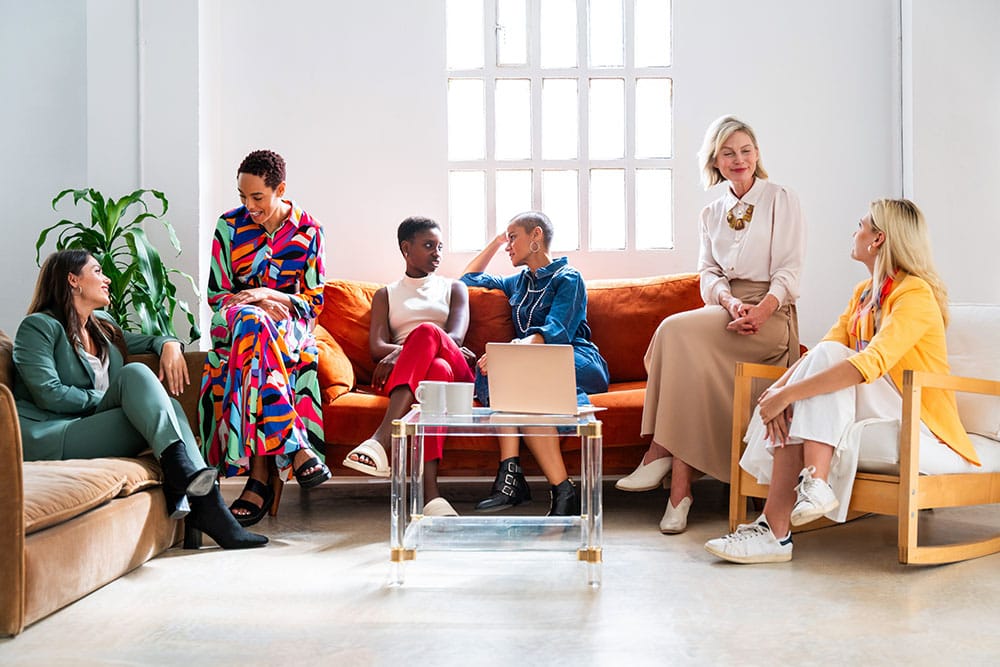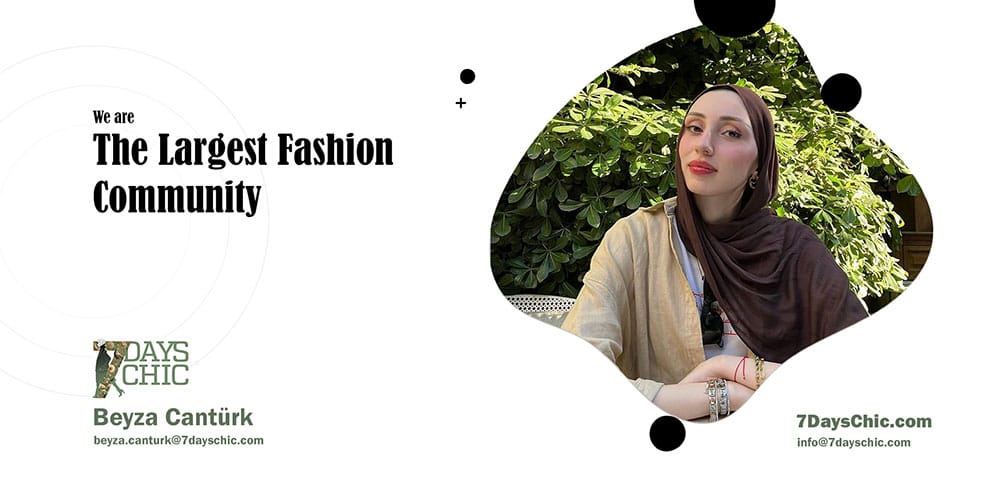1. Introduction: The Power of Community in Fashion
The concept of community has always played a role in fashion, but in the last decade, it has become even more essential. Fashion is no longer just about the clothing or accessories themselves; it’s about the people who wear them, the cultures they represent, and the narratives they create. As the fashion industry evolves, it has increasingly turned to community-driven models to engage with consumers, build brand loyalty, and influence global trends. Social media and digital platforms have reshaped how brands interact with their customers, transforming the way fashion is marketed, sold, and consumed.
Why Community is Essential in the Fashion Industry
Fashion has always been a social force—a reflection of culture, identity, and personal expression. However, the modern consumer is no longer passive. They want to be part of a community, to feel like they belong to something bigger than themselves. This has transformed the relationship between brands and their audiences. Community is now a central aspect of fashion, as it allows for deeper engagement, authentic connections, and long-term brand success.
- Human Connection: Fashion, at its core, is about identity. People are drawn to brands that understand them and reflect their personal tastes, values, and aspirations. Community helps to nurture this sense of belonging. When a consumer feels connected to a brand, they are more likely to remain loyal and continue purchasing.
- Influence of Peer Relationships: Fashion is inherently social—what we wear is often influenced by what others wear and what they think of our choices. The rise of fashion communities allows individuals to share styles, offer advice, and influence each other’s purchasing decisions. Fashion communities can now be formed online in a way that transcends geographical barriers, providing brands with access to diverse groups of consumers.
- Building Trust and Advocacy: Consumers are increasingly seeking transparency and authenticity from the brands they support. A strong, engaged community helps build trust by creating a space for open dialogue, feedback, and shared experiences. This helps brands stay accountable and responsive to the needs of their audience, ultimately fostering loyalty and turning customers into advocates.
The Benefits of an Engaged Audience
An engaged audience can be a game-changer for fashion brands. Instead of relying solely on traditional advertising and promotional tactics, brands with strong communities benefit from the power of word-of-mouth, user-generated content, and influencer endorsements. Here are some of the key benefits:
1. Brand Loyalty
Brand loyalty is the emotional bond that keeps consumers returning to a brand.
- Emotional Connection: When customers feel connected to a brand’s story and ethos, they form an emotional bond that goes beyond purchasing a product. This bond makes them more likely to return to the brand in the future and become repeat buyers.
- Community Engagement: Community engagement creates a sense of belonging and ownership. Fans of a brand will actively participate in discussions, share content, and contribute ideas, which creates a deeper level of brand loyalty.
- Retention and Advocacy: Loyal customers are also advocates. An engaged community helps in generating organic word-of-mouth marketing, encouraging new customers to join. This extends beyond just liking or following a brand—it includes active engagement such as sharing experiences or recommending the brand to others.
2. Collaboration
Collaboration is the process of individuals or groups working together, combining their skills, knowledge, and resources to achieve a shared goal efficiently and effectively.aboration is the process of individuals or groups working together, combining their skills, knowledge, and resources to achieve a shared goal efficiently and effectively.
- Co-Creation with Consumers: A strong community allows fashion brands to collaborate directly with their audience. Co-creation and crowdsourcing designs or concepts allow brands to tap into the creativity of their audience, often leading to more innovative and tailored products.
- Influencers and Designers: Collaborations with influencers, fashion designers, and even other brands can become a natural extension of a community-driven approach. These partnerships can help expand reach and create fresh ideas while resonating with the values of the community.
- User-Generated Content: Fashion brands with engaged communities often leverage user-generated content (UGC) for marketing purposes. This content is authentic, and people are more likely to trust the recommendations and fashion choices of their peers rather than traditional celebrity endorsements.
3. Influence
Influence is the ability to affect or shape the thoughts, behaviors, or decisions of others, either directly or indirectly, through persuasion, authority, or inspiration.
- Trendsetting: A powerful community can influence fashion trends on a large scale. With platforms like Instagram and TikTok, users often set the trends that brands later adopt. This democratization of fashion trends shifts the traditional power dynamic between designers and consumers.
- Social Media Power: Platforms such as Instagram, Twitter, and YouTube allow for real-time conversations, feedback, and content sharing, all of which amplify the influence of engaged communities. This not only drives brand awareness but also shapes the overall direction of fashion as a whole.
- Brand Evangelism: Influential members within a community, such as social media influencers, celebrities, and style icons, can have a massive impact on brand perception. These individuals shape fashion culture by sharing their own unique style and amplifying the voices of the brands they support.
How Digital Platforms Have Reshaped Fashion Communities

Digital platforms have had a profound impact on how fashion communities are built and maintained. In the past, fashion was largely dictated by designers and high-end brands. Today, digital platforms have given consumers more power, enabling them to shape fashion culture and influence trends.
1. Social Media: Instagram, TikTok, and Twitter
These platforms enable brands to connect with global audiences, share visual content, and engage in real-time conversations that shape trends and influence purchasing decisions.
- Instagram’s Visual Influence: Instagram has become the go-to platform for fashion inspiration. Users showcase their personal styles, influencers partner with brands, and fashion houses launch collections to millions of followers. The visual nature of the platform makes it a perfect fit for fashion, as users are able to share and consume style content quickly.
- TikTok’s Viral Trends: TikTok has accelerated the rise of micro-trends and short-lived viral moments. Brands that can tap into these trends can see a massive uptick in visibility and engagement. Additionally, TikTok has allowed for a more direct, unfiltered connection between brands and their audiences.
- Twitter as a Conversation Hub: While Instagram and TikTok focus on visual content, Twitter thrives on conversations. Twitter allows for real-time discourse, where fans can engage with brands, designers, and other community members to discuss collections, share opinions, and generate buzz around new trends.
2. E-Commerce and Online Communities
E-commerce and online communities allow niche groups to connect, share interests, and create personalized shopping experiences that foster deeper brand engagement.
- Shoppable Posts and Influencers: The integration of shopping directly into social media platforms has blurred the lines between inspiration and purchase. Users can see something they like on an influencer or fellow community member and purchase it almost immediately, creating a seamless experience for fashion consumers.
- Niche Fashion Communities: Online platforms have enabled the rise of niche fashion communities—such as sustainable fashion, streetwear, and plus-size fashion—which have become hubs for like-minded individuals to share styles, ideas, and preferences. These micro-communities allow fashion enthusiasts to feel included and represented in ways they might not have been in traditional fashion settings.
3. Impact on Brand Strategy
Digital platforms provide brands with valuable consumer insights, enabling them to adapt quickly, engage authentically, and shape their strategies based on real-time feedback.
- Data-Driven Insights: The digital world provides brands with an unprecedented amount of data. Community engagement on digital platforms gives brands valuable insights into their audiences’ preferences, desires, and behaviors. This allows them to tailor their collections, marketing strategies, and collaborations based on real-time feedback.
- Faster Fashion Cycles: Digital platforms have accelerated the pace of fashion. In the past, collections would take months to reach consumers, but now brands can launch collections instantly and gauge consumer reactions within hours. This has also led to the rise of “fast fashion,” where trends can be created and sold at lightning speed.
- Brand Transparency and Authenticity: Consumers are increasingly drawn to brands that show transparency and authenticity in their practices. Social media platforms have given brands the ability to showcase their behind-the-scenes operations, ethical practices, and sustainable initiatives. Being a part of the conversation and staying open to feedback is crucial for maintaining a strong community.
2. Defining Your Fashion Community

Building a strong and authentic fashion community is essential for any fashion brand or initiative. To connect meaningfully with your audience, it’s crucial to first understand and define who they are, what values they hold, and what unites them beyond the products you offer. Defining a fashion community goes far beyond identifying customer preferences—it involves aligning with the values and aesthetics that resonate with individuals and engaging them on a deeper level. This section delves into the core elements that shape a fashion community, including identifying your target audience, understanding their shared values, and ensuring inclusivity and authenticity.
Identifying Your Target Audience
The first step in defining your fashion community is identifying your target audience. This is not merely about demographics such as age, gender, or income level, but rather understanding the interests, passions, and desires that your ideal community members hold. Your target audience could consist of a range of individuals—from fashion lovers and influencers to designers and models. Here, we’ll break down how you can segment and identify your key community members:
- Fashion Lovers: This group includes consumers who are passionate about fashion, keeping up with trends, and seeking personal style expression. They may be less interested in the technical aspects of fashion design but are deeply engaged in the aesthetics and social implications of style. These individuals are often trendsetters within their own social circles.
- Designers and Creators: Designers, both established and emerging, are an essential part of the fashion community. Their engagement goes beyond purchasing products; they often look to be inspired, connect with other creatives, and showcase their work. A fashion brand that caters to this audience might offer tools for inspiration, networking, and collaboration.
- Models and Influencers: These individuals hold a unique power within the fashion community. They not only showcase the clothing but help shape how the clothing is perceived in the public eye. Models and influencers often possess large followings and have a direct impact on what is deemed “fashionable.” Building a community around models and influencers can help boost your brand’s visibility and credibility.
- Fashion Enthusiasts and Activists: These are the consumers who care deeply about the ethical, social, and environmental aspects of fashion. They value transparency, sustainability, and inclusivity and are more likely to align with brands that demonstrate similar values.
By clearly identifying these groups, you’ll be able to tailor your brand message and community-building efforts to speak directly to their needs, desires, and values.
Understanding the Values and Aesthetics That Unite Your Community
The values and aesthetics that unite your community are crucial to creating a shared identity. Fashion is much more than just fabric; it’s about expressing a vision, a set of principles, and a shared culture. Identifying what unites your community helps to establish trust and loyalty. This section will delve into the importance of aligning values with aesthetic choices.
- Shared Ideals: Fashion communities often gather around common principles such as sustainability, diversity, creativity, or innovation. Some communities are built on a desire to express individuality, while others may unite to challenge traditional fashion norms. For example, a sustainable fashion community might come together over a shared commitment to reducing environmental impact, while a streetwear community may be focused on self-expression and cultural movement.
- Aesthetic Appeal: Aesthetic preferences are essential to the community experience. Whether your brand caters to high-fashion looks, street style, or eco-conscious designs, the visual identity you cultivate will resonate with different segments of your community. The aesthetic should reflect the values of the audience. For instance, if your community values minimalism, your brand’s aesthetic should embrace simplicity in design and visual communication.
- Storytelling: Storytelling can also play a major role in uniting a fashion community. Through narratives around collections, designers, or the people behind the brand, you can align your community with shared cultural references, historical contexts, and social movements. By telling stories that resonate with the target audience’s values, you create emotional ties and foster loyalty.
The combination of shared values and aesthetics creates a cohesive and distinct identity for your fashion community. It’s important to keep in mind that the values that attract one community might repel another, so being authentic and clear about what you stand for will help attract like-minded individuals.
The Importance of Authenticity and Inclusivity
Authenticity and inclusivity are not just trends—they have become essential components of a modern fashion community. A brand that emphasizes inclusivity is not only reflecting society’s diverse nature but is also creating a space where all individuals feel welcome and seen. Similarly, authenticity builds trust, ensuring that your community believes in your brand and the principles it upholds.
- Authenticity: Authenticity in fashion means genuinely representing your brand’s core values and beliefs, consistently delivering on promises, and engaging with your community in a transparent way that fosters trust and genuine connections.
- Building Trust: Authenticity refers to being true to your brand’s message, values, and the people you represent. In today’s market, consumers are highly attuned to inauthentic marketing. A brand that consistently delivers its promises and engages in genuine conversations with its community will build trust and loyalty over time.
- Staying True to Your Story: Authenticity involves creating content and products that align with your brand’s origins and the ethos you want to communicate. Brands that fail to stay authentic often risk alienating their community, which can lead to a decline in engagement and a lack of trust.
- Transparency: Modern consumers value transparency—whether it’s about product sourcing, sustainability, or working conditions. By being open about your practices, you demonstrate authenticity and encourage deeper connections with your audience.
- Inclusivity: Inclusivity in fashion involves creating a space where individuals of all backgrounds, sizes, genders, and identities are represented and valued, ensuring that everyone feels seen, respected, and able to participate in the brand’s narrative.
- Representation: Inclusivity means making sure that people from diverse backgrounds, body types, genders, and ethnicities feel represented within your community. Fashion has historically been exclusive, but today’s consumers are increasingly looking for brands that embrace diversity in their designs, marketing, and messaging.
- Accessibility: Inclusivity also extends to accessibility. A truly inclusive fashion community ensures that people from all walks of life can engage with the brand, whether through affordable price points, a wide range of sizes, or product lines that cater to different needs.
- Fostering Dialogue: Inclusivity also means creating space for open and respectful dialogue. Whether addressing issues like cultural appropriation or celebrating different fashion traditions, an inclusive community allows for multiple voices to be heard and valued. This fosters mutual respect and deepens engagement.
In today’s socially conscious climate, brands that prioritize authenticity and inclusivity are more likely to form lasting relationships with their community. These values resonate with consumers on a personal level and can differentiate your brand from others in the market.
3. Choosing the Right Platforms for Engagement

In today’s digital age, choosing the right platforms to engage with your fashion community is critical to fostering meaningful connections and driving brand growth. The platforms you select will depend on your target audience, goals, and the type of engagement you seek to create. Some platforms excel in visual storytelling, others in in-depth discussions or exclusive interactions. The key is to identify which platforms best align with your community’s needs and preferences, ensuring that the brand experience is authentic and engaging.
This section explores various digital platforms that are essential for building and nurturing a fashion community, including social media, online forums, fashion events, and brand-owned platforms.
Social Media Platforms
Social media is the most widely used and immediate tool for engagement in today’s fashion industry. Fashion thrives on visuals, trends, and real-time communication, making platforms like Instagram, TikTok, and Pinterest powerful tools for building a community. Social media allows fashion brands to directly engage with consumers, showcase their products, and interact with influencers and fashion enthusiasts.
1. Instagram:
Instagram remains one of the most influential platforms in the fashion industry due to its visually driven content. With a highly engaged user base, Instagram offers brands the ability to share high-quality images, reels, stories, and IGTV videos, allowing for diverse content formats that appeal to various types of followers. Instagram’s Hashtags also help build micro-communities and increase discoverability.
- Key Features: Instagram stories, Reels, Instagram Live, Shopping, Influencer collaborations.
- Engagement Tactics: Collaborations with fashion influencers, behind-the-scenes looks, product launches, giveaways, and user-generated content (UGC).
2. TikTok:
TikTok has rapidly become a key platform for fashion brands, especially those targeting Gen Z and millennial audiences. The platform’s viral nature and short-form video format make it ideal for showcasing trends, styling tips, and fashion challenges.
- Key Features: Short videos, trends, challenges, music integration.
- Engagement Tactics: TikTok challenges, viral hashtags, collaborations with creators, styling tutorials.
3. Pinterest:
Pinterest is a platform known for its visual appeal and its ability to inspire fashion and style. Users frequently turn to Pinterest for outfit ideas, DIY fashion tips, and to discover new brands. It’s an ideal platform for brands to promote fashion boards, seasonal collections, and collaborations.
- Key Features: Pin boards, inspirational boards, visual discovery.
- Engagement Tactics: Creating shareable mood boards, promoting seasonal fashion trends, sponsored pins, and collaborating with content creators to share boards.
4. Threads:
Threads, a more text-based companion to Instagram, can be used to foster discussions on fashion trends, brand philosophy, and new collections. It’s ideal for fostering deeper, ongoing conversations that go beyond visuals.
- Key Features: Text-based conversations, quick replies, thread-based discussions.
- Engagement Tactics: Engaging followers in discussions, sharing sneak peeks, soliciting feedback on designs.
5. Twitter:
Twitter is perfect for real-time engagement, sharing quick updates, and interacting with a broad audience. Fashion brands use Twitter to engage with customers, promote new drops, and connect with industry influencers.
- Key Features: Tweets, trending topics, real-time communication.
- Engagement Tactics: Engaging in trending hashtags, responding to followers in real time, sharing sneak peeks, and using Twitter polls for quick audience feedback.
6. Facebook:
While Facebook’s user base is aging, it still remains a strong platform for community-building, especially within niche interest groups. Fashion brands can use Facebook to host groups, run targeted ads, and share detailed posts.
- Key Features: Facebook Groups, pages, events, Marketplace.
- Engagement Tactics: Running Facebook groups for community discussions, organizing virtual events, and using Facebook Ads to target specific audience segments.

Online Forums & Groups
Forums and online groups are platforms that enable users to engage in detailed, long-form conversations, ask questions, and share personal experiences. These platforms often foster a sense of community through shared interests and enable deeper interactions than what’s possible on social media.
1. Reddit:
Reddit hosts a wide array of niche communities (subreddits), making it perfect for fashion brands to tap into specific, highly engaged audiences. Fashion-related subreddits range from discussions on trends, DIY fashion, sustainability, and fashion history, among others.
- Key Features: Subreddits, discussions, AMA (Ask Me Anything) sessions, upvotes and downvotes.
- Engagement Tactics: Hosting AMA sessions with designers or influencers, engaging in existing subreddits related to fashion, sharing unique content in niche subreddits.
2. Facebook Groups:
Private Facebook groups provide an opportunity for more intimate discussions among a brand’s community members. These groups can be used for exclusive content, pre-launch offers, and building a sense of loyalty and exclusivity.
- Key Features: Group discussions, exclusive posts, events.
- Engagement Tactics: Offering early access to collections, hosting group-exclusive giveaways, or conducting polls and Q&A sessions.
3. Discord:
Discord is a platform known for its active chat groups and community-building features. It’s ideal for creating a more interactive and dynamic community around your fashion brand.
- Key Features: Servers, voice chats, text channels, direct messaging.
- Engagement Tactics: Organizing fashion-related events, creating channels for discussions, offering exclusive sneak peeks, or hosting live sessions.
4. Telegram:
Telegram is a popular messaging platform with a more private, secure environment. Fashion brands can leverage Telegram to create groups that focus on sharing exclusive content, product updates, and collaborating with loyal followers.
- Key Features: Channels, private groups, real-time notifications.
- Engagement Tactics: Sending personalized updates, running group-exclusive contests, engaging with followers in smaller, more personal groups.
5. WhatsApp:
Though primarily a messaging app, WhatsApp allows fashion brands to create broadcast lists or group chats where they can engage directly with their most loyal customers. It’s ideal for sending personalized promotions or updates.
- Key Features: Group chats, private messaging, broadcast lists.
- Engagement Tactics: Sending personalized messages, offering VIP updates, and creating interactive chat sessions.
Fashion Events & Meetups
While digital platforms are essential, in-person interactions at fashion events and meetups remain a powerful way to engage with your community. These events allow for a direct, tactile connection with customers, influencers, and designers and offer valuable opportunities for brand visibility and networking.
1. Runway Shows:
Fashion runway shows have long been a cornerstone of the fashion industry. These events allow brands to showcase new collections and build buzz around their brand. Engaging the audience before, during, and after the event on digital platforms can further enhance the experience.
- Key Features: Exclusive first-look at collections, live audience, media coverage.
- Engagement Tactics: Livestreaming the event, offering behind-the-scenes content, collaborating with influencers to share their experiences.
2. Pop-Up Events:
Pop-up events allow brands to create temporary, immersive experiences for their community. These events often offer limited-edition items, exclusive collaborations, or interactive experiences that can create a sense of urgency and exclusivity.
- Key Features: Temporary physical presence, local or global experiences, product exclusivity.
- Engagement Tactics: Sharing event details on social media, offering pre-event promotions, and encouraging social media check-ins and posts.
3. Networking Meetups:
Networking events and meetups bring together influencers, industry professionals, and fashion lovers in an intimate setting. These meetups often result in valuable collaborations and long-lasting relationships that strengthen the brand’s community.
- Key Features: In-person interactions, industry professionals, intimate settings.
- Engagement Tactics: Organizing panels, fashion workshops, or collaborations with influencers or designers.
Continue Reading:
How Building an Engaged Community in Fashion / Part 1
How Building an Engaged Community in Fashion / Part 2
How Building an Engaged Community in Fashion / Part 3
How Building an Engaged Community in Fashion / Part 4
Written by: Beyza Cantürk




Add a Comment